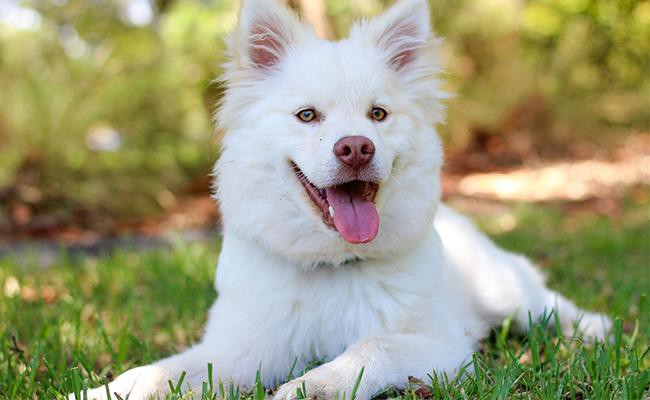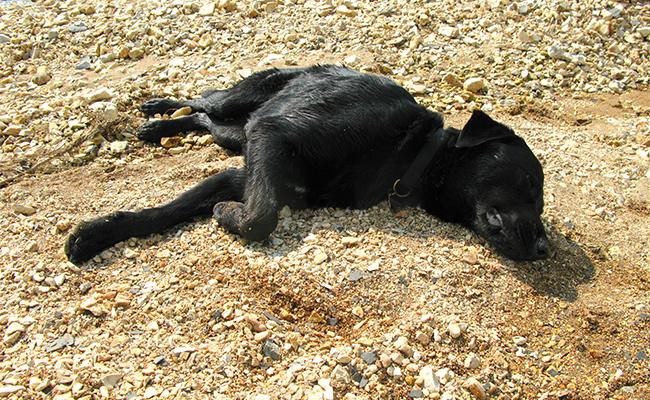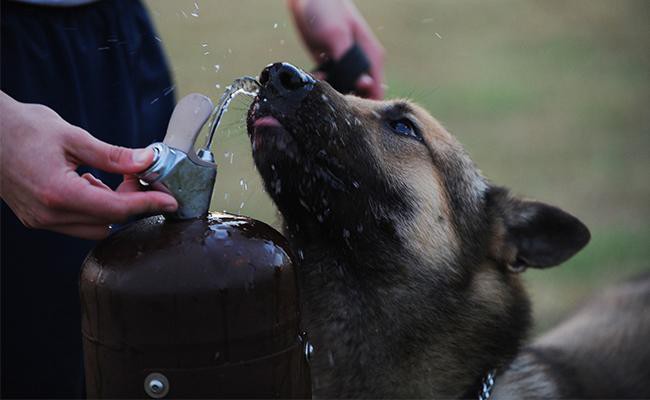Dog Pregnancy Calculator And Timeline
As a pet parent, you may have seen your four-legged buddy pant in summer, but do dogs actually sweat?
According to experts, yes, dogs do sweat, and sweating is one of the process dogs use to cool down.
While sweat glands aid with cooling, dogs do not release heat in the way a human does. Dogs do not have the regular, prominent sweat glands that other species and humans have.
So, how do dogs cool down?
Science Of Sweating
Perspiration
When a human’s body temperature rises, it could be due to-
- He has been doing some strenuous activity
- Present in a hot place
- He begins to sweat or perspire
When humans perspire, it is visible.
For instance, every individual sweats, although some person perspires much more than others.
For humans, they sweat on their brows and under their arms, while some people perspire almost everywhere.
There is a real reason why people have never seen a dog sweat. The answer is dogs only sweat in certain parts and not the way we normally do.
Sweating is a method humans use to regulate their body temperature. Humans have sweat glands all their body.
As and when our internal temperature touches an unhealthy proportion, the sweat provides a bit of moisture, which later evaporates.
As sweat evaporates, it cools the body.
So, sweat helps or regulates our body temperature.
Do Dogs Have Sweat Glands?
Basically, canines have two types of glands – Apocrine glands and Merocrine glands.
Why do dogs have body odor?
Apocrine glands are somewhat different from the merocrine glands. While experts treat them as sweat glands, merocrine glands release pheromones.
Pheromone’s purpose is not to cool your dog off. These apocrine glands are present all over your pet’s body. These pheromones help your dog identify his fellow companions by scent. This is like a human body odor.
Do dogs sweat through their paws?
Merocrine glands function a lot like sweat glands present in humans. These sweat glands are present in your dog’s paw pads. It will work when your buddy is too hot and cool him down.
This is the main reason why you find wet paw prints in your house during summer and other hot days.
Since most canines are protected by fur, so sweat evaporating is out of the question.
That’s why it’s much proper and correct for canines to have merocrine glands in their paws. By nature, dogs have very little fur in there.
Where Do Dogs Sweat From?
Dog’s sweat glands are inefficient as well as few in number.
Thermoregulation In Dogs
Dogs depend on other methods to regulate their body temperature. This process is called thermoregulation.
The main type of thermoregulation in canines is panting. As and when a dog pants, the heat soars upright from his chest. It escapes through his throat, mouth, and tongue.
As your dog exhales air during panting, the damp air evaporates and cool him down.
Vasodilation
Vasodilation is another form of thermoregulation. This deals with expanding the blood vessels. This process allows warm blood to rise closer to the surface.
As per reports, the closer this blood gets to the body’s surface, the better your dog will feel.
What’s The Science Behind Panting?
Perspiration plays an important role in keeping your dog cool. Canines rely on panting and with this, they regulate their body temperature.
Does Fur Make Canines Hot?
Your dog’s fur actually functions as an insulator. This insulating layer backfires during summer as it makes it difficult for canines to lower their temperature.
For instance, let’s take the example of an insulated thermos. If you put one bucket full of cold water inside a hot vehicle, it will heat up as time progresses.
Putting it inside a freezer afterward will keep it cool, but insulation will keep it warm. If a pet canine gets too hot, usually it takes longer to cool down.

Dogs with thicker furs are insulated than dogs with thinner fur. This explains why single-coated, short-haired dogs are better at managing heat but very less cold tolerant.
Without this layer, the thick-haired canines are prone to heatstroke. This is the reason why dog experts advise against having a double-coated dog breed.
It can lead to the loss of weather management, clogging, and improper re-growth.
Heatstroke In Dogs
Limited perspiration, vasodilation, and panting are not that effective in keeping the dog cool as sweating is.
This increases the risk of heatstroke, heat exhaustion, or heat stress.
Heatstroke causes serious problems for all dogs. The most affected dogs include brachycephalic breeds. This includes French Bulldogs, Boston Terriers, Bulldogs, Boxers, and Pugs. They have a short nose and flat face.
Thanks to a dog’s distinct anatomy, these dog breeds find it harder to cool themselves. Dogs with dark coats, obese dogs, and dogs exposed to heatstroke before are at greatest risk for heatstroke.
Heatstroke happens when canines overheat. If they are left unattended in this condition for long, it can really be fatal.
Every dog lover should learn about the signs of heatstroke and heat stress.
Signs Of Heatstroke In Dogs
Some of the common signs of heatstroke in dogs include-
- Unconsciousness
- Ataxia
- Muscle Tremors
- Seizures
- Irregular or rapid heart rate
- Red gums
- Excessive drooling
- Body temperature over 105.8 degrees Fahrenheit
If you feel that your canine is dealing with heat stress or heat stroke, talk to your vet at the earliest and shift him to the nearest vet clinic.
How Dogs Keep Cool?
We might find it hard to make our dogs pant, but we can do certain things to help them manage their body temperature.
- If your canine is spending more and more time outdoors, ensure that he has regular access to plenty of clean, fresh, drinking water and shade.
- Track the temperature inside your house and make sure it’s cool and comfortable for your pet.
- No matter how urgent you feel, never ever leave you’re canine unattended for long in your car. Keep in mind that temperature inside a car can quickly climb to unimaginable proportions.
- Avoid exercising your pet when it’s really hot outside. You can exercise your dog early in the morning or late in the evening.
- If you spend time playing fetch with your dog, carry the ball so he will get some time to cool himself off.
- A simple tip that many pet owners adapt to keep their pets comfortable on a humid day, involves using a mister or spray bottle.
Fill it with plain water and regularly spray your pet’s body with it. You have put some moisture on your dog’s fur, it will evaporate producing a cooling effect.
Check out our article on how to keep your dogs fresh and chill in summer.
Does My Dog Have Fever?
A temperature over than 102.8 degrees Fahrenheit is a concern in canines.
Signs of fever include –
- Listlessness
- Lethargy
- Anorexia
- Depression
- Increased rate of breathing
- Reluctance to move

Hyperthermia means an increase in temperature. This could be due to a lot of other factors including excitement or so.
Do Dogs Have Body Odor?
Both yes and no. Canines perspire a little from hair follicles over their body. This dampness contains a scent that’s distinct to every dog.
This scent enables dogs to identify one another.
- Oil

They produce oil which produces a distinct smell. This oil is good for your dog’s skin and hair.
- Grooming

Grooming and bathing your dog will cut on yeast smell that may come from the glands. This is normal for pets.
Do Dogs Sweat Through Their Tongue?
While many people believe that a dog’s tongue consists of sweat glands, but this is untrue.
The tongue consists of salivary glands. This is the reason why people assume that dog’s sweat through their mouth.
So, no dogs perspire through their tongue but the mouth appears important in panting.
Can Dogs Sweat In Their Sleep?
If your doggie’s fur is stinky, it’s not because of night sweat. Dogs do not experience night sweat. They sweat through their paws or nose.
If your pet wakes up damp, it could be because of several factors-
- He’s peeing in his bed
- Extrudes saliva through his mouth
- Licking himself too much
If this bothers you, talk to your vet at the earliest for further action.
What Animals Don’t Sweat?
Mammals have perspiration glands because they are warmblooded. Coldblooded animals, by nature, do not have sweat glands. Fish, amphibians, and reptiles don’t have sweat glands.
Take a look at these animals that don’t sweat at all.
- Pigs

Pigs roll and play in the mud to regulate their body temperature. A mud covering will protect it from the insect bites and hot sun.
Some pigs have tusks and hair too.
- Porpoises, Dolphins, and Whales

These mammals are from the order of Cetacea. They always live in water. These aquatic creatures use the water to manage their temperature.
There are cetaceans in freshwater rivers and lakes.
- Rhinoceros

Rhinos roll in the ground and that mud protects them from parasites and hot sun. They are the world’s second-largest land animal.
These animals are herbivores in most cases. A full-grown rhino can weigh close to 2-2.5 tons.
























